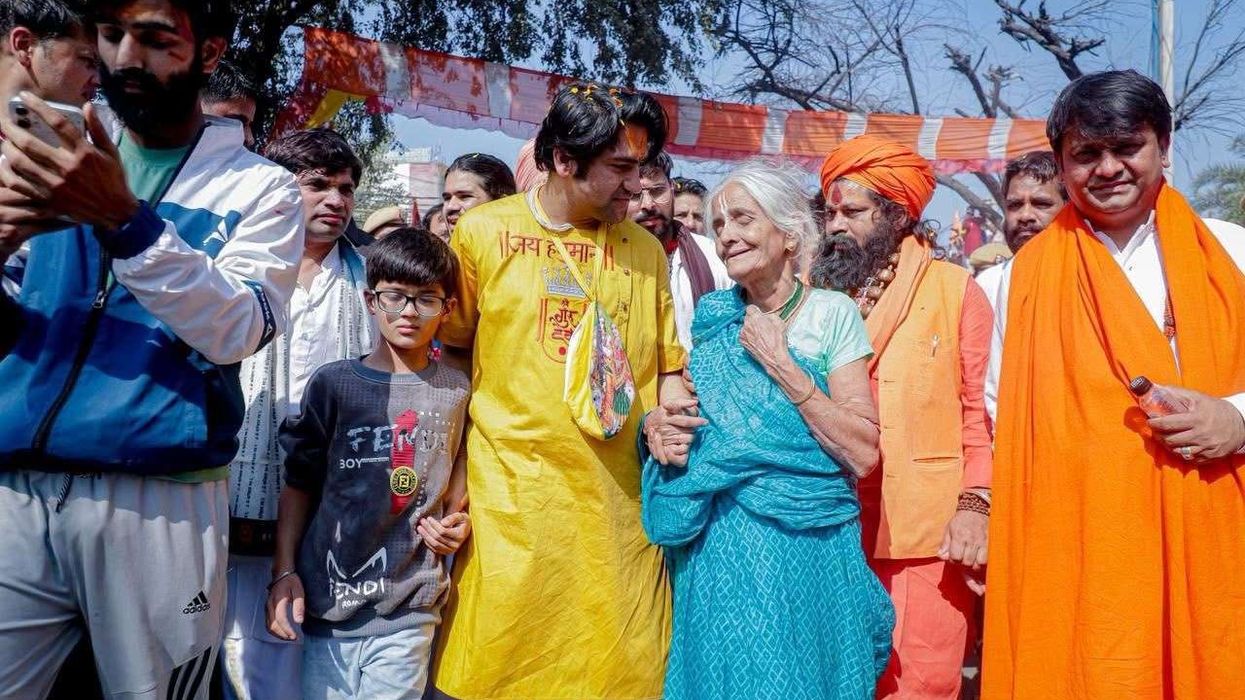Dimpled girl Preity Zinta, who established herself as one of the most prominent faces of Hindi cinema in the 2000s with a slew of successful movies such as Kal Ho Naa Ho (2003), Veer-Zaara (2004), Salaam Namaste (2005) and Kabhi Alvida Na Kehna (2006), is returning to spotlight after a five-year hiatus. Her comeback vehicle, titled Bhaiaji Superhit stars her as a mercurial, loud-mouthed woman Sapna Dubey, who does not trust people easily and can shoot a pistol at the drop of a hat.
Recently, our Mumbai correspondent, Mohnish Singh, got an opportunity to sit down with the actress at JW Marriot Hotel, Juhu. In this brief interview, Preity Zinta talks openly about her role in Bhaiaji Superhit, her experience reuniting with frequent co-star Sunny Deol, how Hindi cinema has changed over the years and who she would like to play on silver screen if offered a biopic.
Preity, you are making a comeback to films after a long time. What convinced you so much about this character that you could not say no to it? Were you nervous when you faced the camera after a long gap?
I was extremely nervous when I started shooting for this film because, throughout my entire career, I have always been offered roles which are very modern, very sophisticated and very educated. But no one ever offered me an out-and-out desi character with loads of shades. I think the only role where I played a cracker was Madhubala in Chori Chori Chupke Chupke (2001). Despite having many layers, you can see through her; it was that kind of a character.
Coming to Sapna Dubey, my character in Bhaiaji Superhit, it is very rustic and high-spirited. Initially, I was very concerned about her look in the movie. But after a series of discussions, we decided to use Varanasi’s handloom as much as possible in designing her outfits. We used a lot of Banarasi prints, Banarasi saris and fabrics. The most challenging part, however, was to catch the mannerism and body language of the character because Sapna Dubey comes from Varanasi. I worked a lot on the language. There is a certain way people of Varanasi speak. So I had to keep that in my mind while playing the part.
In the trailer of the film, we saw you mouth some extremely funny dialogues in English...
(Laughs) My character is very fond of English. Though she is a 12th fail woman, she believes her English is better than that of London’s queen. Let me tell you, incorporating that in my character was really challenging. Her dialogues have a lot of variation as well as humour. I had to prepare a lot to nail this. A lot of preparation was involved in getting that accent. I had to destroy my English to play this character (laughs). I have worked really hard on it. If I had to put it in a filmy-style, I have given my blood and sweat to this character and I hope people like it.
Preity, you have also been a very strong woman in real life. Do you relate to your character at all?
Sapna is not as strong as you think. She is very insecure. She has a lot of trust issues and that is why her catchphrase in the flick is ‘What the shak?’ Insecurity is something that ruins a person. Sapna is not a strategist. Whatever is there in her mind, she will blurt it out without worrying about consequences. Someone who is mouthy cannot become Chanakya. The same is with Sapna. She is a pure soul who does not take things to her heart. But, at the same time, she is somebody who is very mercurial. In a nutshell, Sapna is not at all like Preity. I am very straightforward like her and that’s where all similarities between us end. She is not structured like me.
You have known Sunny Deol, who is your co-star in Bhaiaji Superhit, for many years now. You did a couple of films with him in initial years of your career. How has he changed over the years, according to you?
He is still the man of very few words. He still dances the same way (laughs). Jokes apart, working with him is always a pleasure. He always brings home cooked food on sets. That has not changed at all over the years.
Talking about my relationship with him, I think I share a better equation with his younger brother, Bobby Deol. I have been his heroine as well. I don’t speak too much in front of Sunnyji. If there is one actor in my career who I did not talk to very much, it has to be Sunnyji. But in this film, I had a number of scenes with him. So I tried to kind of compensate that. Having said that, he is always Bobby’s elder brother to me. So we don’t share that informal relationship with each other. That casualness is not there. But I used to hover around him during lunch breaks because, as I mentioned earlier, he gets delicious home cooked food for lunch. That white butter and sarson ka saag... it’s delicious.
What kind of change do you see in Hindi cinema since you did your last film a couple of years ago?
Nowadays, everybody is talking about content-driven films. Everyone is saying that Bollywood has started producing more content-driven movies. Let me tell you, content-driven films have been there since the time of Mother India (1957). So there is nothing like that content-driven films have come into existence now. Even female-oriented films have been around for ages. The first film of my career was a female-oriented film. What difference I really see is that now there is a lot of pride about being an Indian. A lot of films are being made which centres on our own nation, our culture and our people. A lot of biopics are being made today. There is Dangal (2016), a film on women wrestlers; there is M.S. Dhoni: The Untold Story (2016), a film on a cricketer and there is also a film like Sanju (2018). So that is a change.
Audiences have changed a lot over the years. Social media has got a pivotal role in deciding the fate of a film. There is a lot more transparency in what are you doing and how are you doing. So that way the industry has definitely changed. Otherwise, there are still formula films which have always been there. You cannot change that. And there are still masala films. A lot of films which used to be shot in foreign countries have now started filming in India. Now we want to make movies about us; not about us in foreign countries but about us in our own country, and I think that is really nice.
If you are given a chance to star in a biopic, who would you like to play on silver screen?
See, biopics choose you, you don’t choose biopics. I don’t think Rajkumar Hirani could have gone to anyone else except Ranbir Kapoor for the part of Sanju. Ranbir looked like Sanju. So if I resemble any important person, then I would like to play her (laughs). For M.S. Dhoni: The Untold Story, the makers chose Sushant Singh Rajput because he looked like him. Suppose they would have chosen Rajkummar Rao for the part. Despite being such a phenomenal actor, he would not fit the role. So biopics choose you, you don’t choose biopics, I believe.
Also featuring Sunny Deol, Ameesha Patel, Arshad Warsi, and Shreyas Talpade, Bhaiaji Superhit hits cinemas on 23rd November.





 DJ Shai Guy
DJ Shai Guy  DJ Shai Guy
DJ Shai Guy DJ Shai Guy
DJ Shai Guy DJ Shai Guy
DJ Shai Guy






